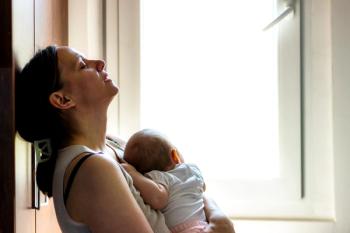
Navigating Awkward LGBTQI Holidays
Finding peace, integrity, and new traditions despite discrimination and rejection.
The holidays bring cheer and celebration—as well as stress and tension. Although winter festivities are meant to bring friends, family, and colleagues together, they can also be filled with awkward encounters and uncomfortable situations.
For members of the lesbian, gay, bisexual, transgender, queer, and intersex communities (LGBTQI), these experiences include an added layer of stress. Although the holidays are meant to be a time to relax and celebrate, many who identify as LGBTQI must defend themselves against questions, snide comments, and outright hostility. More than half of LGBTQI members hide their personal relationships to avoid controversy and confrontation.1 Others avoid gatherings with family and friends. Faced with discrimination, rejected by family, and not so silently judged, many LGBTQI members end up spending the holidays in loneliness and isolation.
It leaves many in the LGBTQI community struggling to enjoy the holidays in a way that is meaningful and true to them. It also explains why celebrations like Friendsgiving have grown in popularity. Many are choosing to replace traditional holiday family gatherings with more meaningful personal events.
Struggling to cope with awkwardness and rejection goes against the spirit of the holidays, which are meant to offer hope and comfort during winter months. Mental health professionals can give their patients the gift of self-care by talking about these challenges and sharing tips to enjoy the holidays.
Unique Holiday Challenges
Members of the LGBTQI community come from every walk of life. They represent an incredible range of race, ethnicity, religion, socioeconomics, education, and more. What sets them apart is their diverse expression of gender, gender roles, and sexuality.
About 5.6% of adults in the United States identify as LGBTQI, up from 4.5% in 2017. This is a number that has been rising steadily since 2012, when only 3.5% identified as such. It is also a number that includes more diversity in sexual orientation and gender identity. More than half of LGBTQI adults, 54.6%, identify as bisexual. About 24.5% identify as gay, 11.7% as lesbian, and 11.3% as transgender.2
In recent decades, the LGBTQI community has experienced a major sociocultural shift in acceptance and awareness along with legal and policy protections. This has lent the community a measure of confidence. But this is a group still struggling for acceptance. For many, coming out as LGBTQI is not easy. It can expose vulnerabilities, drive wedges into relationships, and result in self-stigmatization. These challenges are particularly felt among those who also belong to other minority groups.
The holiday season is already a time of high stress. Planning, entertaining, and gift-giving, coupled with schedule disruptions, overindulgence, and even guilt, can take its toll on anyone. As a result, this is when many abandon healthy routines, increase their use of alcohol and other substances, and compromise their compensatory or coping mechanisms.
At the same time, seasonal depression or “winter blues” can compound the stress and resulting impairments. Plus, the COVID-19 pandemic has exposed everyone to isolation and loneliness. Many have lost loved ones, employment, and relationships. The holidays represent a spectrum of reminders to the highs and lows of one’s life.
Many members of the LBGTQI community are already suffering from limited social and family connections, and all of this can increase feelings of sadness and grief during the holidays. Those who attend family reunions often find it difficult to avoid conflicts and are subject to passive or overt homophobic comments and outright rejection. The fine line between healthy bonding and too much togetherness gets crossed repeatedly.
The holidays tend to be a time to make important announcements, but many in the LGBTQI community avoid coming out, introducing a new partner, or announcing they are transitioning due to a fear of rejection or a desire to not kill the cheer.
Although hugely liberating and therapeutic, coming out can be a difficult process. How one manages the stigma, fear, and degree of concealment can influence how easy or difficult the process will be. Individuals must prepare for a wide variety of reactions, including rejection, repugnance, violence and abuse, loss of support and resources, loss of employment, exclusion from legal and policy protections, and homelessness. This can come from family, friends, one’s workplace, faith communities, and many other areas of society.
Concealing one’s sexual orientation is often used as a coping strategy aimed at avoiding the negative consequences of stigma. But this can become a source of major stress and constant preoccupation, leading people to limit their friends, interests, and expression. Not only that, but it can also reinforce one’s fearfulness and belief of being different or inferior.
Self-stigmatization involves directing negative social values toward oneself, causing a person to view themselves from what they imagine is the perspective of someone else. This can cause a person to devalue themselves and can create internal conflicts and poor self-regard. This internalized homophobia may lead to self-harm, such as eating disorders and HIV-risk-taking behaviors. It may also affect intimate relationships and sexual function.3
Those who conceal their sexual orientation are not likely to access formal and informal support resources, even within the LGBTQI community. This is extremely unfortunate, especially because members of the LGBTQI community are twice as likely to experience a mental health condition compared to heterosexual adults. Transgender people are 4 times as likely.4 Members of the LGBTQI community also experience higher rates of homelessness, substance abuse, and suicide.4
Mental Health Challenges
It was not too long ago that homosexuality was considered a mental disorder. That changed in 1973, when it was declassified and removed from the second edition of the DSM.
Against this backdrop, the LGBTQI community has maintained a sometimes-uneasy relationship with psychiatry and the mental health field. Although all patients should receive unbiased care, there are clinicians who continue to discriminate against members of the LGBTQI community, whether consciously or subconsciously. As a result, many patients may avoid seeking the care they need.
LGBTQI members are more likely to have experienced traumatic experiences such as bullying, hate crimes, harassment, discrimination, prejudice, and family rejection. A 2019 school climate survey showed that 86% of LGBTQ youth reported being harassed or assaulted at school, which can significantly impact their mental health.5
One survey found that 1 in 3 LGBTQI adults experienced mental illness compared to 1 in 5 heterosexual adults.6 Members of the LGBTQI community are at 4 times greater risk of depression and 2 times greater risk of suicide attempts, a rate even greater among teenagers.6 Suicide attempts among transgender individuals is a shocking 40%, compared to 5% of the rest of total population.7
They also experience higher rates of substance abuse, with 40% of LGBTQI adults using illicit drugs in the past year, compared to 17.1% among heterosexual adults.6 There is also a greater potential for homelessness, with 20% of LGBTQI youth and young adults at risk of losing their homes, mostly due to rejection by family or discrimination. This risk is especially high among Black youth who identify as LGBTQI.4
Combined, these health indicators point to a lower life expectancy among LGTBQI people living in stigmatizing communities. Studies indicate that repression and inhibition can negatively affect immune systems and result in poor health. On the other hand, expressing one’s emotions can actually boost the immune response and reduce adverse symptoms.3
Practicing Holiday Self-Care
There are many ways members of the LGBTQI community can protect the spirit of the holidays this season. It all starts with a little self-care and efforts to surrounding yourself with people who are accepting and inclusive. This may also be the perfect time to create new holiday traditions. Here are just a few suggestions:
-Do not feel pressured to celebrate the holidays according to what others are doing. You deserve to prioritize yourself. Travel, buy yourself gifts, and do the things you truly enjoy.
-Seek help and guidance from friends or people you trust. It is important to talk about difficult or distressing feelings or emotions without fear of judgment.
-Likewise, offer support to other LGBTQI community members. Listen, reassure them, and show that you care. Providing support to others can boost your self-esteem and promote mental health.
-Limit time with family or antagonizing groups of people. Instead, make more time for the friends and communities that provide support. Create a sense of belongingness and community by seeking out LGBTQI-inclusive gatherings and celebrations.
-Do not abandon healthy routines. Make sure you get plenty of exercise and sleep and limit the use of alcohol or other illicit drugs.
-Limit social media engagement, if necessary.
-Get professional help. If you are struggling with mental health, reach out to a mental health provider, preferably someone with expertise in LGBTQI issues or who provides an LGBTQI-affirming approach to treatment.
Concluding Thoughts
Members of the LGBTQI community deserve to enjoy and celebrate the holidays just like anyone else. Yet, many are confronted with questions, judgement, and rejection. Instead of relaxing with family and catching up with friends, they may conceal their sexual identities or avoid uncomfortable gatherings, causing them to miss the opportunity to strengthen social bonds.
Members of the LGBTQI community—and anyone, for that matter—can preserve their integrity by practicing self-care and self-acceptance. Creating family by surrounding yourself with those who support you can go a long way in allowing you to relax, enjoy, and survive holidays.
Dr Singh is a psychiatrist and Regional Medical Director for
References
1. Olito F. 15 surprising statistics about today's LGBTQ people. Insider. June 2, 2021. Accessed December 22, 2021.
2. Jones JM. LGBT identification rises to 5.6% in latest U.S. estimate. Gallup. February 24, 2021. Accessed December 22, 2021.
3. Meyer I. H.
4. LGBTQI. National Alliance on Mental Illness. Accessed December 22, 2021.
5. The 2019 National School Climate Survey. Gay, Lesbian & Straight Education Network. Accessed December 22, 2021.
6. Medley G, Lipari RN, Bose J, et al. Sexual orientation and estimates of adult substance use and mental health: results from the 2015 National Survey on Drug Use and Health. Substance Abuse and Mental Health Services Administration. October 2016. Accessed December 22, 2021.
7. The report of the 2015 US Transgender Survey. National Center for Transgender Equality. December 2016. Accessed December 22, 2021.
Newsletter
Receive trusted psychiatric news, expert analysis, and clinical insights — subscribe today to support your practice and your patients.













